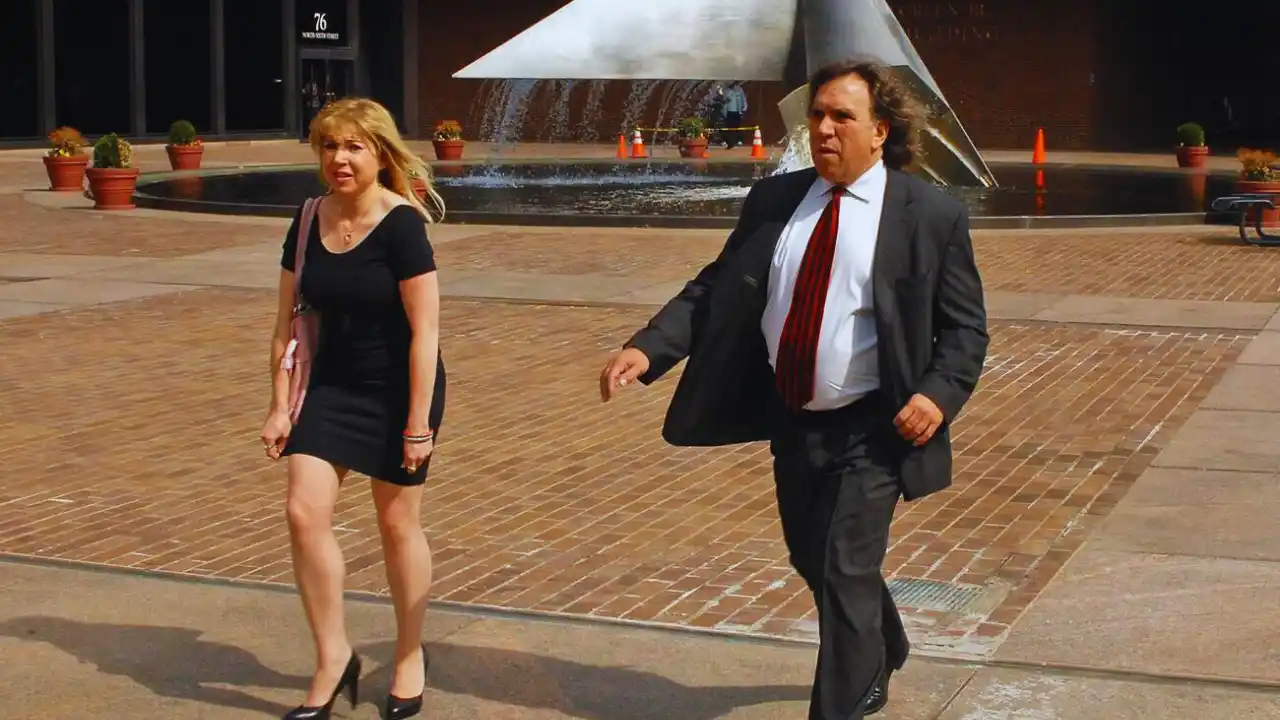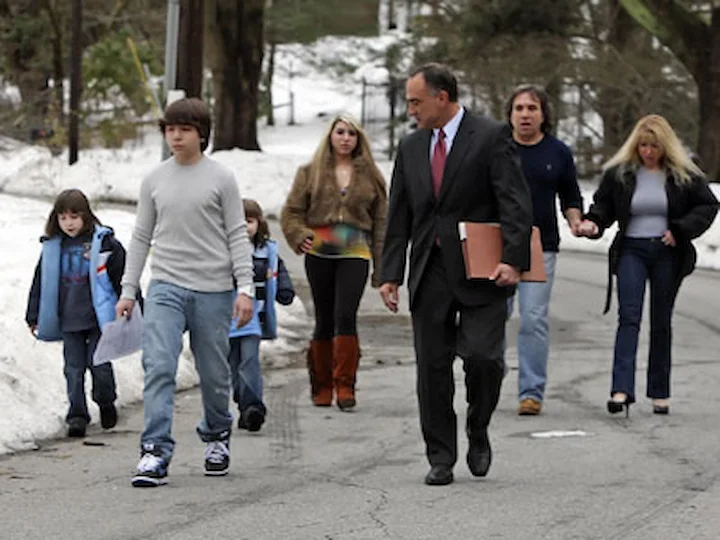From School Laptops to Privacy Lawsuit: The True Story of the Robbins Family
The Robbins family never expected a school-issued laptop to disrupt their lives. In 2009, they discovered their son Blake was being secretly spied on through his school laptop’s webcam in their home.
This breach of privacy led to a landmark federal lawsuit against Lower Merion School District, which gained national attention. The case, now featured in the Amazon Prime documentary Spy High, highlights ongoing technology, surveillance, and student privacy issues.
It tells how the Robbins family fought against invasive school monitoring, raising essential questions about the balance between security and privacy in our digital world. As digital learning tools grow in schools, the Robbins case serves as a crucial reminder of the need for clear boundaries and proper consent regarding student data.
The Day That Altered Everything
Michael and Holly Robbins led an ordinary life in Merion, Pennsylvania. They picked the neighborhood because its schools rank among the top in the state. Good education was their priority, with six children. Holly even attended Harriton Senior High School herself as a teenager.
On Nov. 11, 2009, the school summoned them for a meeting. School officials told Blake’s parents that their son was using and selling drugs. The parents were shocked. But what followed was even more surprising. School administrators showed them a photo of Blake at home to prove it.
The image depicted him holding what appeared to be a pill. The school captured this image using the webcam on the MacBook laptop that the school issued Blake. “We did not ever give anyone permission to spy on our son in our home,” Holly would later tell reporters.
The couple could not understand what was going on. The school said it had software that could track lost or stolen laptops. They said they had activated Blake’s camera because the family had failed to pay an insurance fee. The Robbins categorically denied being aware of such monitoring or missing any payments.
This meeting touched off a privacy battle that would soon draw national attention. The Robbins family was faced with the choice of going quietly or pushing back against what they considered a significant invasion of their home privacy.
Fighting Back Against School Surveillance
The Robbins family fought back. On Feb 11, 2010, they filed a federal class action lawsuit against the Lower Merion School District. Attorney Mark Haltzman eventually took their case.
“I don’t think this school has the right to put cameras in kids’ homes and spy on them,” Holly Robbins told reporters point-blank. The family alleged that the school district secretly took over 400 screenshots and webcam images of student laptops.
The news spread quickly. Soon, the Robbins case was in the national news. Reporters parked outside their house. Privacy experts discussed it, and schools nationwide began scrutinizing their technology policies.
But there were not universal supporters of them. Other parents in the school district accused the family of doing it just for the money, and others noted that the family had previous debts. These attacks stung, but the Robbins family did not give up on their case.
“This is not about the money,” Michael Robbins said in a statement to reporters. “This is about protecting our kids’ privacy and ensuring no school can sneakily watch kids in their bedrooms.”
The evidence showed that the school district remotely activated webcams on school-issued laptops 42 times during the 2009-2010 school year alone. They took dozens of pictures each time without students’ or parents’ knowledge. The finding shocked many, to whom the school had promised their children’s devices would serve as helpful technology.
The Legal Fight And Settlement
The lawsuit continued even as pressure mounted on the family. Court documents showed that the school had grabbed thousands of photos and screenshots from the web cameras of student laptops. Many were captured while students were at home, sometimes in private settings.
A federal investigation closed in August 2010 without charges against any of the school’s officials. Investigators failed to prove officials acted with lousy intent when spying on students. This news disappointed the Robbins family, but their civil case moved forward.
Two months later, in October 2010, the Robbins settled with the school district. The district will pay a total of $610,000. After legal fees, the Robbins family received $175,000. Another student who signed up for the suit received $10,000. The other $425,000 went to attorney Mark Haltzman.
Following the settlement, the Robbins family said the resolution allowed Blake to go forward with his life. Students shouldn’t have to fight protracted legal battles, and “keeping our focus on education was the right decision,” they said.
The settlement also mandated the school district to write new privacy policies. Those rules included prohibitions on activating students’ webcams remotely and clear policies regarding monitoring technology. The case prompted many school districts nationwide to scrutinize their laptop policies.
The Robbin’s later believed that their attorney had become motivated by money. They did not contact Haltzman after the case closed, suggesting some strain in their relationship.
Where Are Holly and Michael Robbins Today?
After years in the public eye, Holly and Michael Robbins wanted a quieter life. They moved to Lakewood Ranch, Fla., in July 2022, where they reside now with their youngest daughter.
They are now also five times over grandparents. They frequently return to Pennsylvania to see family members who remain there. Holly, a Villanova University alum, has taken to grandparenting—baking cakes and coordinating family get-togethers.
The couple formerly owned Robbins Sports International LLC in Gladwyne, Pennsylvania. The business seems to have closed since their move south. In 2023, they are said to have filed a suit against Marriott over a slip-and-fall incident, but details are private.
The Robbins family appears to have found peace despite their challenges. Like many on Kinsler’s IG, Holly posts about family milestones and special occasions to send love to those closest to her. Away from the media glare that once followed them, the couple seems to be living a more laid-back lifestyle in the sun-drenched state of Florida.
Their story is being told via the Prime Video documentary series Spy High, which debuted at the SXSW Film Festival before its official release on April 8, 2025. The four-episode series delves into the intersection of education, technology, and privacy through the Robbins case.
The Robbins Case Was Far From the End
The Robbins case reshaped the way schools use technology. Many school districts rewrote their policies after the case, including clear rules about when and how they could monitor school devices.
Parents around the country became acutely aware of digital privacy concerns. Many began questioning the technology their children had brought home from school. Schools sent home detailed consent forms laying out exactly what monitoring might occur.
Tech companies, too, were paying attention. Several bolstered educational software with better privacy features. Some built systems that enabled tracking stolen devices without accessing webcams or private data.
The case involved a critical balance: Schools are responsible for protecting their property, and students have the right to privacy at home. This calibration continues to test teachers today as remote learning becomes the new norm.
Legal experts view the Robbins case as a landmark in privacy law. It suggested that even with the best of intentions, boundaries around privacy can lead to dire consequences. The case is now taught in law schools and cited in other privacy lawsuits.
Though the media attention has tapered off, the lessons of the Robbins case are still relevant. As artificial intelligence tools and new monitoring forms increasingly make their way into classrooms, the questions posed by this Pennsylvania family still resonate.
FAQ
What specifically did Lower Merion School District do that was wrong?
The school district embedded tracking software on school-provided laptops that could turn on webcams remotely without a student’s knowledge or consent. They videotaped students in their homes, invading their privacy.
Why did the school say it was monitoring student laptops?
Officials said the software was intended to track only lost or stolen laptops. In Blake Robbins’s case, however, it was activated because his family hadn’t paid an insurance fee for the computer.
Were there any criminal charges to the school?
No. Federal prosecutors later declined to pursue criminal charges after the investigation. There was no evidence that school officials had criminal intent in turning on the webcams.
What was the real financial payout for the Robbins family?
Biting off a $610,000 settlement, the family got $175,000 after deducting a legal fee of $425,000. Another student involved got $10,000.
Are schools still permitted to monitor school-issued devices?
Yes, but with much more clearly defined boundaries. Today, most schools require parents to sign consent forms that clarify precisely what monitoring might happen. Remotely activating a webcam is, in general, illegal.
Where can I see the documentary on this case?
Spy High, a four-part documentary series about the case, is streaming on Amazon Prime Video. Released: April 8, 2025
Final Words
Holly and Michael Robbins’s story highlights how ordinary parents can significantly impact the situation by respecting privacy rights. Their determination led to stronger safeguards for students across America amid rapid technological changes in schools. The Robbins case serves as a reminder to assess critically new technologies introduced in educational settings.
Now retired in Florida, Holly and Michael never sought the spotlight, but their fight for their son’s privacy sparked a national conversation about digital rights and transformed education policies. As schools send home technology agreements, remember the Robbins family and their message: convenience should never override our fundamental right to privacy at home.
Table of Contents



